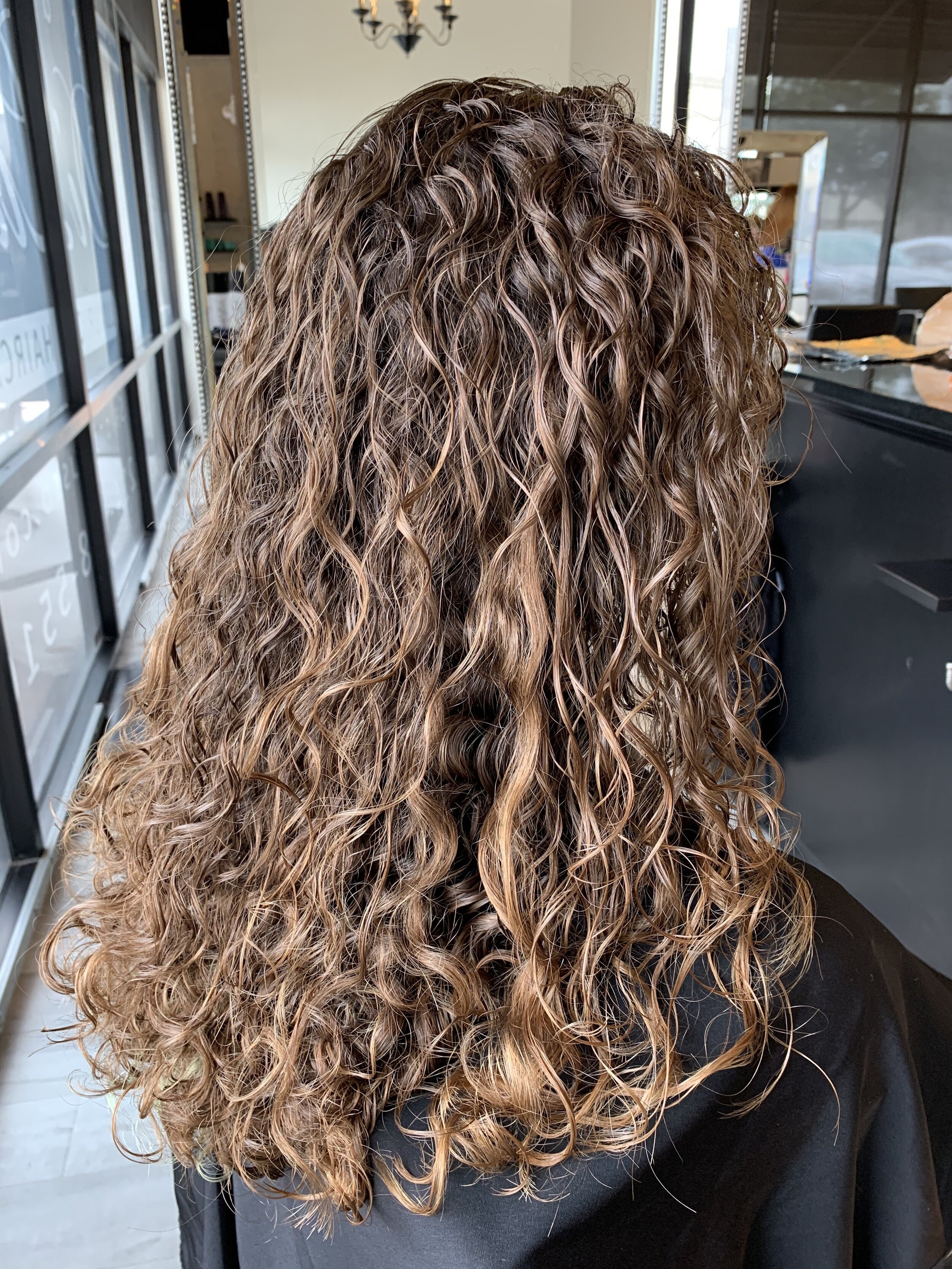Does Curly Hair Need to be Cut Differently?
Curly hair is very different from other hair types and needs to be cut and treated differently than non-textured hair. From the way layers are cut, the angle of the shears, specialized techniques and determining where curls are cut are key factors which need to be performed for specific types of wavy and curly hair.
Why Curly Hair Is Different
Curly hair expands outward making it bottom heavy and flat on top, creating what’s known as “pyramid head”. In order to achieve a more balanced and flattering hairstyle, layers are added in an attempt to eliminate this undesirable triangle shape.
Curly hair - scott risk hair salon
Curly Hair
When curly hair is layered using traditional cutting methods the result is often unflattering, creating a heavy shelf in the hair, resembling the silhouette of a jellyfish. The amount of disconnection correlates to the tightness of curl, length of layers, hair density and how much it recoils.
This heavy “shelf” is a result of elevating the hair when layers are added using traditional techniques. For this reason, curly hair cutting methods have been developed, which have led to an exponential increase of women embracing their curls.
What’s My Curl Type?
Most women with curls have more than one type of curl shape and pattern throughout their head, that range from curl, kink, wave and coil that need to puzzle together, in order to create a cohesive look. These patterns are categorized as 1 for straight, 2 for wavy, 3 for curly and 4 for kinky. The classifications are further sub-categorized based on the diameter of the wave, curl or coil pattern that range from A for a wider pattern size, B for medium and C for the smallest.
How to Cut Curly Hair
Cutting layers at a specific angle sculpts curls to create soft edges at the ends of the hair. Traditional layering cuts straight lines that produce negative results emphasizing shelf layers to an even greater extent. In an attempt to minimize the shelf layers, many hairstylists, not trained to cut curly hair, will often resort to thinning shears in the hopes of minimizing the heavy shelf, which worsen the results.
Ouidad cut - scott risk hair salon
DevaCurl
DevaCurl is a method of cutting curly hair that is cut dry and is based on how curls lay naturally. It is performed by cutting curl by curl, as opposed to sectioning the hair. It is intended to only be worn curly, because layers differ in length and can look uneven and choppy when blown out smooth or straightened. Another potential drawback to this method is that curls may be unidentified, because they do not present themselves at the time of the haircut, since curls tend to behave differently on a daily basis.
Ouidad Curly Haircut
Ouidad is a curly hair cutting method that is cut wet. Layers and face-framing are cut at an angle at varying lengths, based on how they respond and look visually when cut. It uses a carve and slice technique that enables curls to puzzle together. The advantage of cutting curly hair wet is that it allows the stylist to better understand the natural curl pattern to provide a more effective cut. A disadvantage to the Ouidad method when cutting fine hair with a loose curl pattern when wet is that the S shape of the curl is significantly weighed down making it difficult to identify and fully utilize the techniques
Scott Risk Curl Method
DevaCurl and Ouidad are similar in that they are both based on the visual aspects of how individual curls lay when worn curly, so layers tend to vary in lengths and are uneven. The Scott Risk Curl Method, is a precision curly hair cutting method developed by curly hair specialist, Scott Risk. This method creates layers that are even, balanced, and curl specific, resulting in a symmetrically cohesive look. It is cut wet and at an angle, is both technically precise and intuitive, allowing for artistic flexibility, while not bound to a singular method. The Scott Risk Curl Method achieves the best results for all curl types and looks great styled curly, blown out smooth or straightened.

